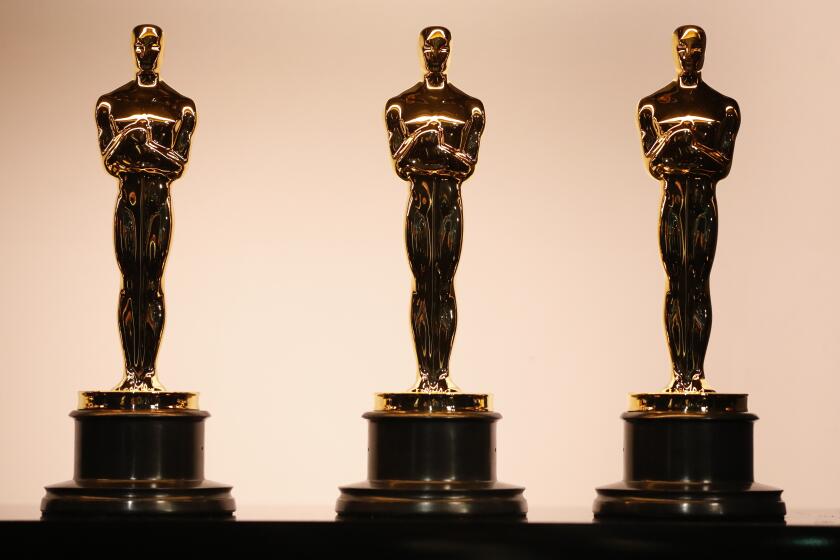East meets rest on the Riviera
- Share via
Before Michael Moore started gobbling up international headlines -- on Saturday, the French newspaper Le Monde consecrated the filmmaker a “cineaste rebelle” on its front page -- the biggest news at Cannes was Asian film. This year, six of the 18 films in the competition are from Japan, South Korea, Hong Kong and Thailand, more than any other part of the world. Finalement, the most prestigious film festival in the world, has tacitly recognized what serious movie lovers have known for years: that Asia is where it’s at, cinematically.
Hollywood still dominates the world’s market and its cinematic consciousness, and great films continue to be made in Europe and, on occasion, in Africa. Since the mid-1980s, however, when so-called Fifth Generation films such as Chen Kaige’s “Yellow Earth” began trickling out of the People’s Republic of China, attentive filmgoers have increasingly looked to the East for aesthetically thrilling, politically venturesome cinema.
Once upon an art-house time, the names on every cinephile’s lips were Ingmar Bergman, Federico Fellini and Francois Truffaut. Although too many aging boomer critics continue to think that foreign-language film begins and ends with these European titans, many of today’s most important auteurs have names such as Hou Hsiao-hsien (Taiwan), Takeshi Kitano (Japan) and Wong Kar-wai (Hong Kong).
One of the most influential filmmakers in contemporary cinema, Wong returns to Cannes this year with his long-awaited, self-described “futuristic” film, “2046.” In this country, Wong is perhaps best known as one of the directors Sofia Coppola thanked when she won an Academy Award for “Lost in Translation” earlier this year. She also thanked Michelangelo Antonioni and Jean-Luc Godard, both of whom have films at Cannes (inexplicably, she tossed in Bob Fosse as well).
These lions of European art cinema may indeed have played a part in her cinematic education -- just as they did for her father, Francis Ford Coppola. But the younger Coppola has clearly made a very close study of Wong’s work, and it’s to this visionary Asian auteur that she owes her film’s shimmering look, wistful tone and even some crucial story elements.
This kind of veiled appreciation -- and appropriation -- is nothing new. Quentin Tarantino cheerfully admits the influence of Japanese and Chinese genre films on “Kill Bill,” but the Asian influence often gets lost in translation.
It also reaches beyond the cineaste likes of Tarantino and Coppola. Since the late 1990s, Hong Kong superstar Jackie Chan has become a familiar sidekick for rising Hollywood stars like Owen Wilson.
Hong Kong directors, particularly John Woo, have changed the look, tempo and vibe of the action film from the U.S. to France, where director Luc Besson produces such Asian-style entertainments as “The Transporter.” Meanwhile, RZA from the Wu-Tang Clan provides introductory remarks -- of a sort -- for the DVD release of an old kung-fu flick, recommending a blunt and malt liquor instead of the usual popcorn and soda.
At Cannes, the high temple of art cinema, the Asian influence will be of a more rarefied order, and festivalgoers will be found enhancing their viewing experience with a glass of red wine or two, especially for later-evening screenings.
In addition to Wong Kar-wai’s new feature, the competition includes films from South Korea’s prodigiously talented Hong Sang-soo (his entry is “Woman Is the Future of Man”), and Hong’s fellow countryman, Park Chan-wook (“Old Boy”), known primarily for genre films.
Japan’s well-regarded anime director Mamoru Oshii (“Innocence”) and Hirokazu Kore-eda (“Nobody Knows”) also have films in competition, as does Thailand’s Apichatpong Weerasethakul (“Tropical Malady”), a talented young filmmaker who studied at the Art Institute of Chicago and, a Bangkok-based critic friend assured me, goes by the name “Joe.”
At Cannes these features will be received on merit, although politics, prejudice and patience will also be determining factors. Festivals aren’t radically different from the rest of the world: Faster, slicker (not too slick, lest the films be deemed too Hollywood), more accessible films often play best, especially for jet-lagged journalists.
This may make things tough for non-genre directors working in lesser-known national cinemas such as those of South Korea and Thailand.
The great irony is that in his formalist daring and intellectual reach, Hong Sang-soo hews closer to the great European art-cinema tradition exemplified by Antonioni and Godard than most European and American directors.
Whether that will mean anything to Western critics clinging to the art cinema of their youth -- much less distributors in this country, where non-genre Asian films rarely make a dent -- remains to be seen.
More to Read
Only good movies
Get the Indie Focus newsletter, Mark Olsen's weekly guide to the world of cinema.
You may occasionally receive promotional content from the Los Angeles Times.









